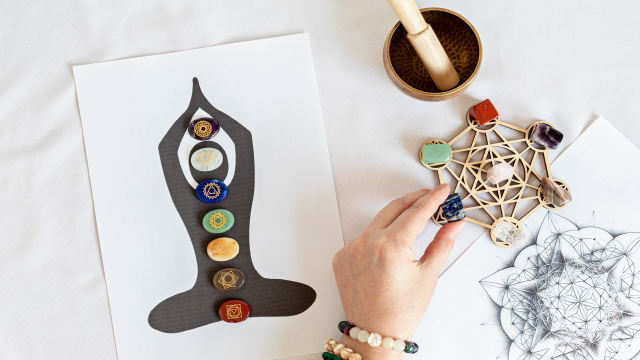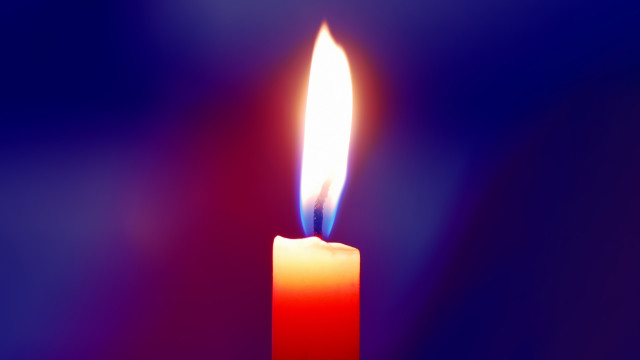You Are More Creative Than You Think

As an artist, I've had times when I've been very much in touch with my creative flow, but other times I've lost connection to this free and playful part of myself. It can be frustrating and even painful to feel creatively blocked. But if we look deeper, we may find there's a fear of being exposed, ridiculed, or perhaps a desire to please or belong.
"Your Life Is Already Artful – Waiting, Just Waiting, for You to Make it Art." - Toni Morrison.
I believe that every human being is creative. I've been an artist and an art educator for thirty years, and one of the saddest things I hear from adults is, "I'm not creative at all."
Think about a child and how they naturally express whatever is alive for them at the moment through their movement, play, words, and facial expressions.
As we grow older, our brains specialize, and we lose interest in certain things, but that doesn't mean we stop being creative.
Think about all the things you create each day. I imagine the list would include everything from preparing meals and composing emails to working toward goals and developing change in your life. Creativity can also be perceived as your unique style and imprint on everything you do.
Dancing with the Present Moment
I'll bet you can bring to mind moments when you felt deeply connected to yourself, others, or nature. Or when you were highly focused on something you love doing, and time seemed to fly by.
Being in a state of creative flow, just like being in "the zone," as many athletes describe it, are fully human experiences. Meditation practice often feels like this to me. I get blasts of creative ideas during meditation, and I'm constantly surprised by what I find when I observe my mind.
When we're engaged in creative expression or meditation, we launch ourselves courageously into an intimate dance with the present moment, allowing it to unveil its mysteries to us. This dance with uncertainty requires some faith and often rewards us with moments of pure joy.
"If You Can't Make a Mistake, You Can't Make Anything."- Marva Collins
Despite being naturally creative beings, we often block this creativity and criticize ourselves harshly if we think we're not doing something right.
Mistakes are great lessons, allowing us to learn and grow. It takes experience and confidence to tolerate the inevitable failures of creative practice. Meditation can be a powerful ally in developing a tolerance for these mistakes while continuing to explore the depths of our creativity.
In her book "Big Magic," Elizabeth Gilbert describes how the underlying fear system is the same in all animals; it is based on the limbic brain trying to keep us safe. But as Gilbert says, tadpoles don't make art! It's also helpful to recognize that this inner critical voice is, more often than not, untrue.
Don't Be Too Rigid or Too Loose
There is a famous Buddhist parable about a veena, an Indian stringed instrument. In the story, a monk named Sona, who had previously been a musician, approaches the Buddha for guidance with his meditation practice. The monk practiced walking meditation so rigorously that his feet were blistered. The Buddha asks Sona if his veena was playable when the strings were too tight or too loose, to which Sona replied no.
The Buddha goes on to say, "In the same way, too much effort leads to restlessness while overly slack effort leads to laziness. Thus you should determine the right pitch for your effort, re-tune the pitch of your faculties, and then pick up your theme."
It's a beautifully apt metaphor for how to approach any creative endeavor. Creative practice can be too tight or too loose. If the instrument's strings are tightened too much, they pop or break. Creative expression can become tightly controlled or about nailing something down rather than relinquishment into discovery.
However, if the strings are too loose, the resulting sound is toneless, and there's no music. When we find just the right balance of discipline and freedom, we move into a mode that's closer to channeling a space where your mind almost seems to move aside as the creative work starts to flow through you.
Taking Wise Action
Here are some strategies that I've developed for remaining open to my creative flow:
• Stay as close to your initial impulse as possible without analyzing it. This will allow that initial bud to bloom unfettered.
• Try not to get too far ahead of yourself in terms of outcomes. Pause and meditate amid your creative practice to assist you in staying in the moment.
• Remain open, curious, and playful.
• If you decide to share your work with others, use the opportunity to learn more about your work and yourself.
Learn how to observe your thoughts to better access the stillness and awareness within in this guided session, Slow Down Your Busy Mind by mindfulness coach Alison Hutchens.
Header Photo: Dougal Waters/Stone/Getty Images







